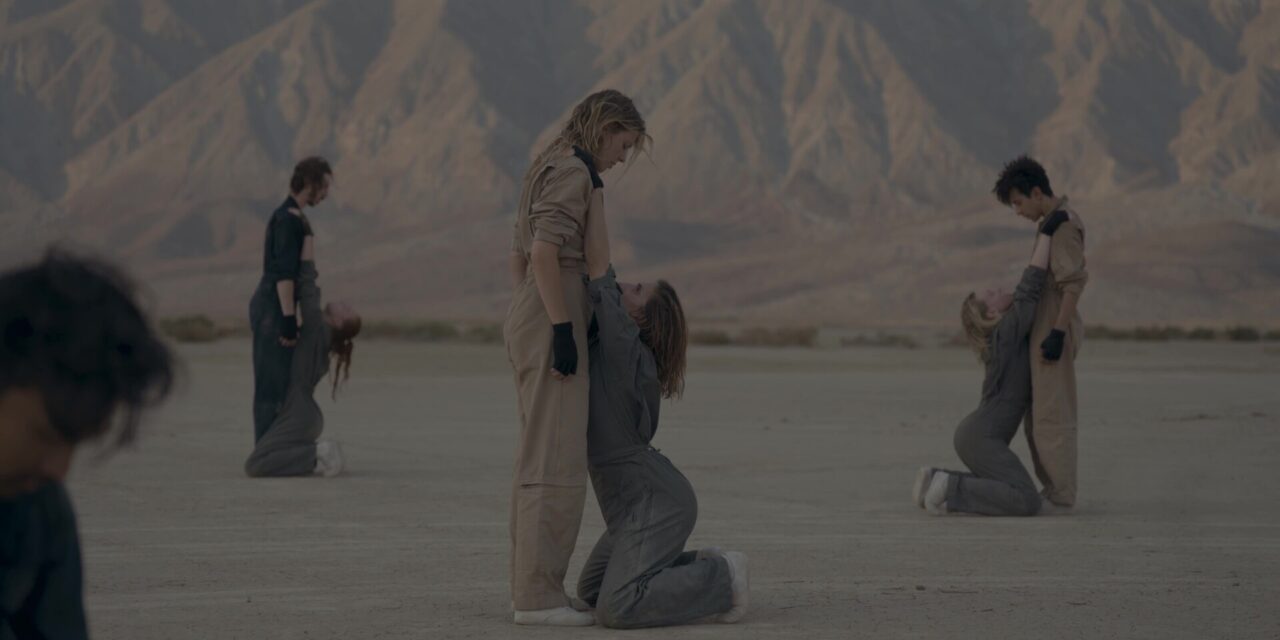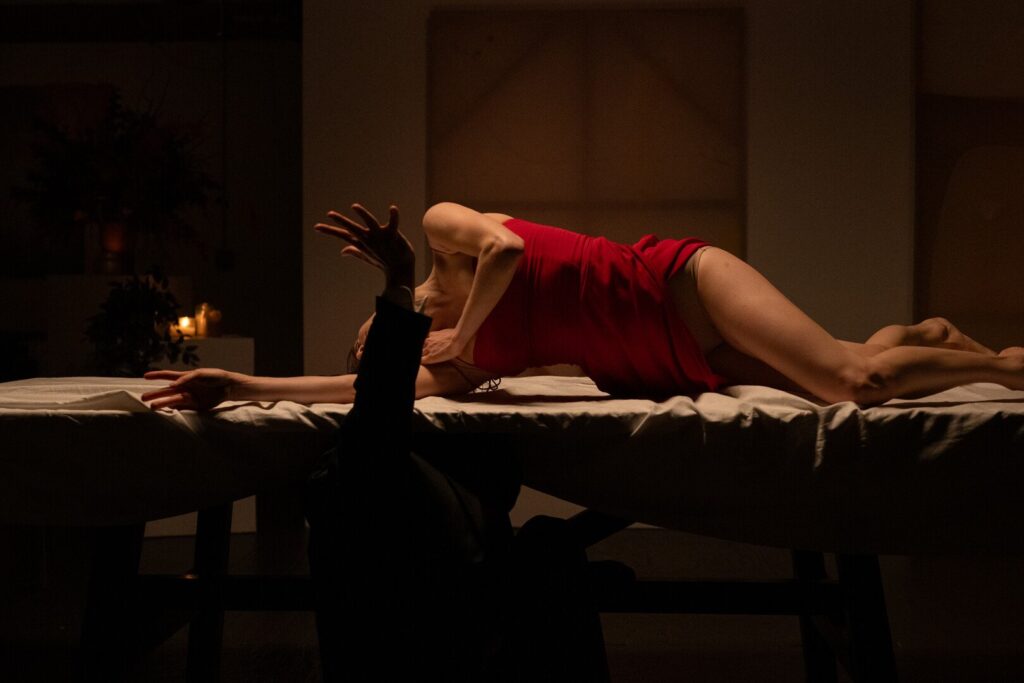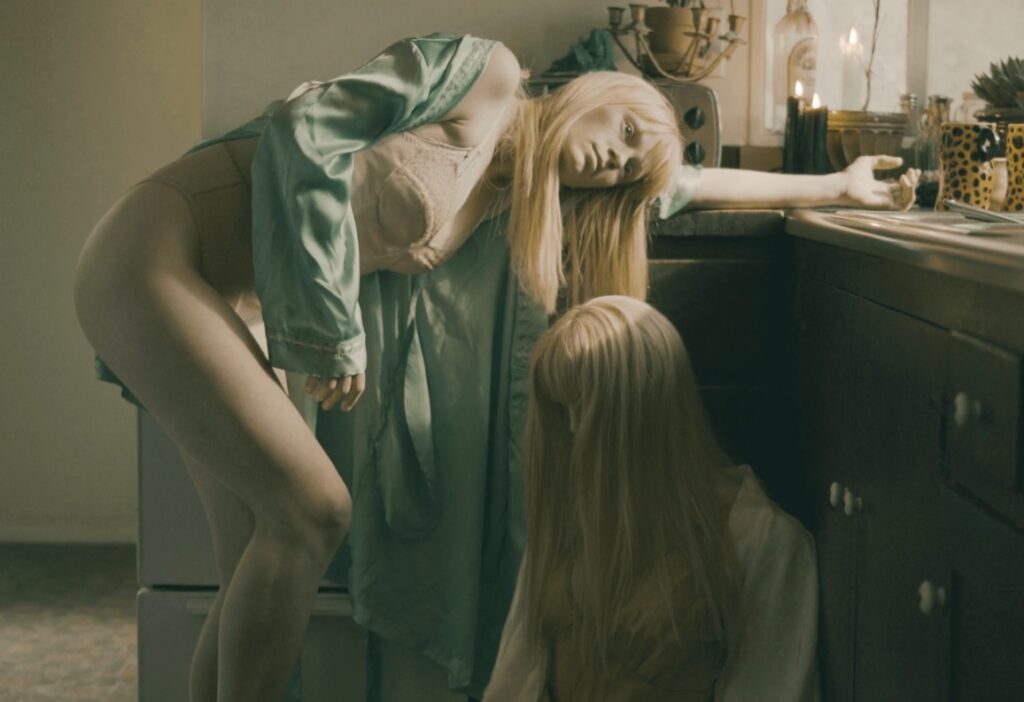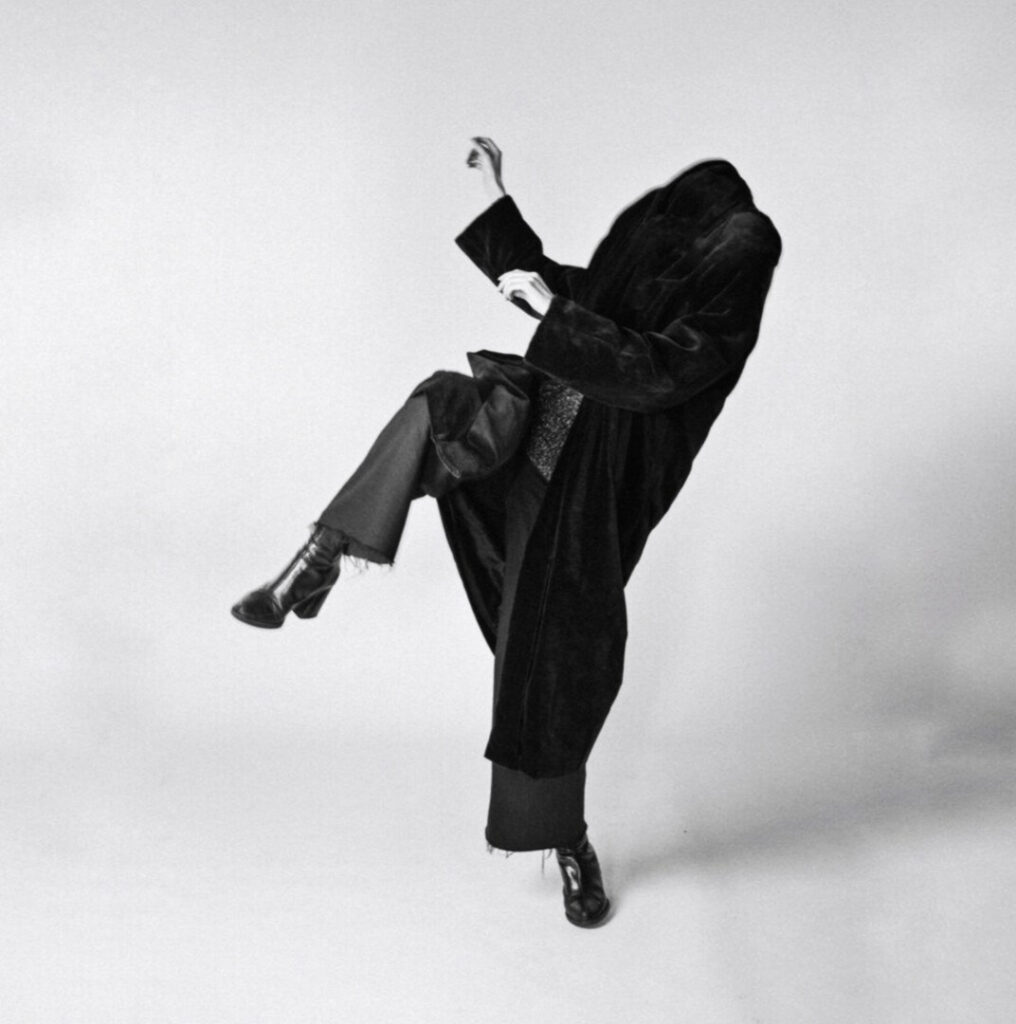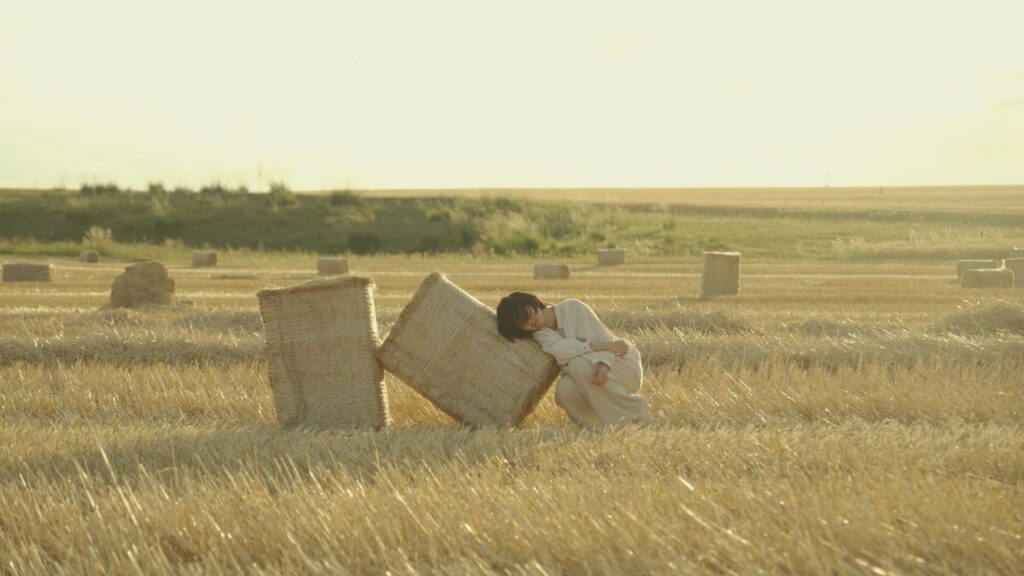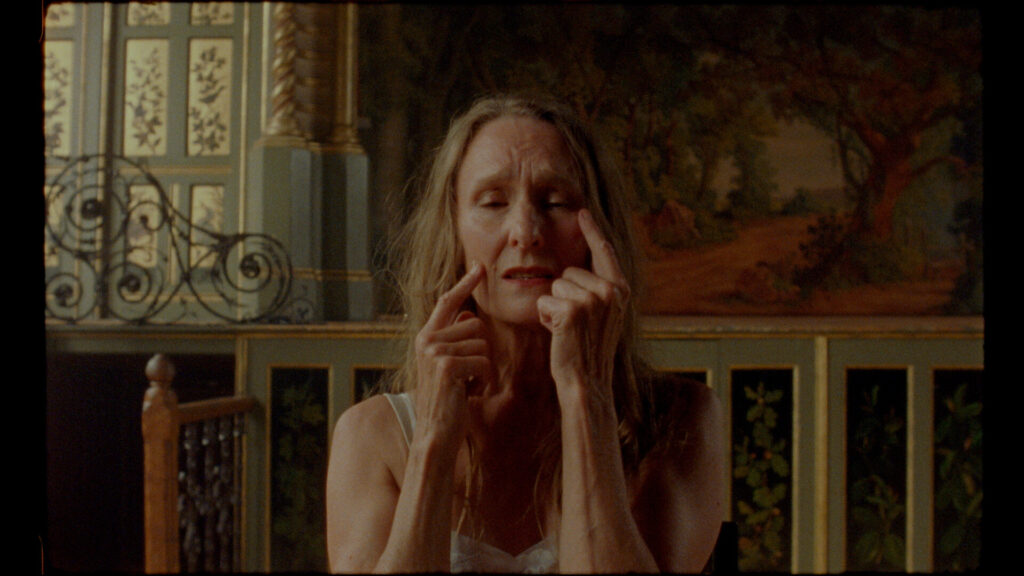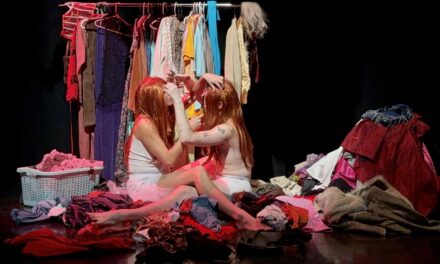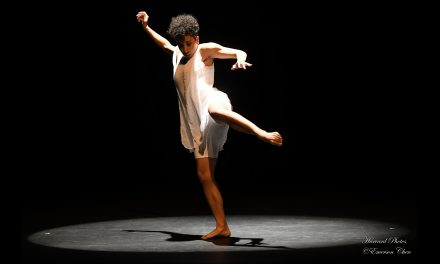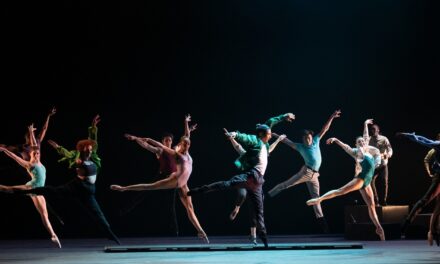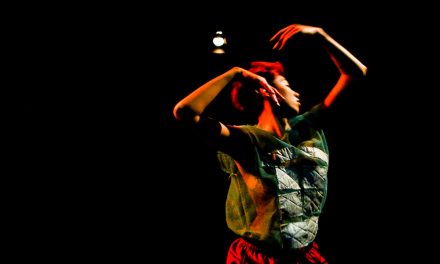From an impromptu monologue over cake to a witchy submission to dance, Dance Camera West’s programming on Thursday, January 30, 2025, showcased international and local creatives discovering new ways to tell stories through dance. The program was extensive with nine films in the “International Shorts Program B” installment and 11 films in “LA Pops Up,” curated by Hysterica’s Kitty Mcnamee. Rather than dissect it all at once, here are the trends that stood out in this year’s iteration of the festival.
One of the leading films that stole the show was Vanessa Beletic’s “Catching Spirits.” In it, a young girl who has been told that dancing can give her seizures slowly inches into the dance studio. When she finally lets the dance take over, an otherworldly possession occurs. This film has a strong narrative. In the mythological story, Beletic highlights the beauty and all-encompassing power of dance. The film entrances you and gets you thinking about dance as an art form.
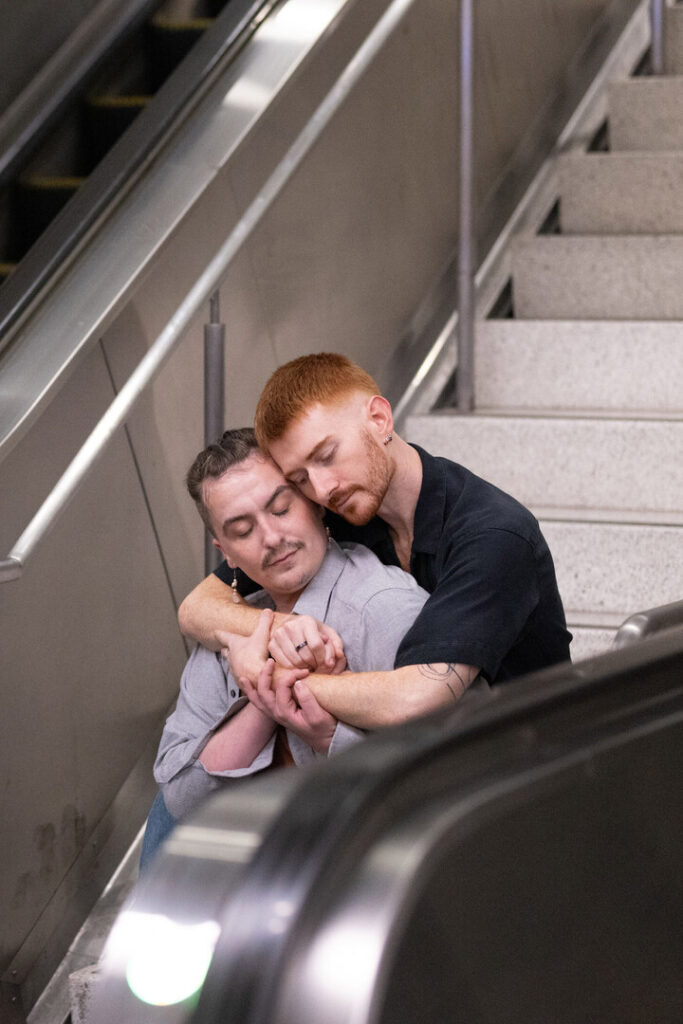
“Intimité Révélée” — choreographed by Lorris Eichinger, Hope Mohr, and Olivia Evans and directed by Natasha Adorlee – Screenshot courtesy of DCW.
In the International Shorts program, “Intimité Révélée” — choreographed by Lorris Eichinger, Hope Mohr, and Olivia Evans and directed by Natasha Adorlee — stood out with its unique narrative and use of gestures. The film centers on three queer couples navigating intimacy in public and private settings. You can see in the performers’ faces and movements how the environment influences how they relate to their counterparts. When the public comes into view, their movement is smaller with a disrupted flow. They can’t even hold hands. But when they can block out strangers, it feels like they are all alone in the world. They finally grasp onto each other and the movement is no longer disjointed. It is unified and expansive. This film has a profound message and delivery.
Plenty of the films in LA Pops Up externalized the internal psyche. This trend is nothing new to dance. It is one of the greatest parts of the art form: externalizing what is difficult to put into words. “Well Done” by Megan Paradowski and Colin Lupe is a film tied to an immersive dinner and performance of the same name by EMPARA, a new company in LA, that went up in 2024. The film starts as an intense dinner and evolves into a tense push and pull between its guests. The cinematography by Lupe beautifully catches each detail, from feet rushing across the table to a stern stare down. It ends with stillness, but the space is clearly not the same.
“Don’t Cry Maggie,” directed by Nina McNeely and conceptualized by Denna Thomsen, explores the emotional aftermath of infidelity. This film begins subtly, framing Thomsen as she stands in the kitchen, distraught. Her psyche comes to the surface through movement. The choreography is quick and, at times, wicked. She shifts from gooey weight shifts to brash gestures. This juxtaposition reaches an extreme when another body (a lifeless dummy) enters the equation. Her intimacy with the dummy is surprisingly heartbreaking.
Sara Silkin’s “Lost Mind” with LA Contemporary Dance Company explores the personal psyche during a manic episode by following a headless figure (signified by a big coat) searching for everything he lost. He finds a source of healing out of a little coat who crosses his path. The piece feels absurd at first, but Silkin’s storytelling abilities help us sympathize with this absurd figure who holds a heartbroken interior despite his comical exterior. As the duo played by JM Rodriguez and Lori Dorfman come together, there is a beautiful resolve that makes you shed a tear.
Experimental films in both programs used dance to create vignettes of everyday life. However, this approach can be iffy for the art form of dance films. Some are gorgeous reflections of nature and the self, as was done in Mofei Wei and Yang Sun’s “Poet.” The work is inspired by Chinese poet Yu Xiuhua, a rural woman with cerebral palsy who reflects on prejudice against women, disability and divorce in Southern China with her poem “Crossing Half of China to Sleep with You.” Sun writes in the program notes, “Her words are like grains of wheat, rooted deeply into the earth, dancing upwards, full of unwavering determination to live vigorously and on her own terms.” The duo captures this feeling of freedom with the wheat in beautifully shot moving portraits of a woman dancing in a wheat field, seemingly going against the slowly flowing grain with sharp movements of her arms. Nina McNeely’s film with CLI Conservatory Artists, “De Profvndis,” is another beautiful vignette but for a different reason. It is faster yet offers beautifully edited imagery (also edited by McNeely) that pulls from iconic religious and mythological imagery. This film is incredibly different from the rest and McNeely has a strong grasp of capturing ferocity on camera.
Vignettes take a turn when there is no human beneath the dancer. There’s nothing to ground them in a reality. While there can be gorgeous and interesting movements, it is hard to find the intention. This is especially the case for Simon Vermeulen’s “Saint-Rémi.” The short shows a dancer moving atop a rocky landscape with a single leg inside a pyramid sculpture. While the movement is interesting, it is hard to see the connection. Tony Testa and Wade Robson’s “DisInteGrated,” a film produced by Jacob Jonas The Company, does the same. It is slated as a meditation of movement and sound, but the movement is often disconnected from the ground it states it is reflective of. The one moment this happens is when Testa lies on the ground and shakes. The dirt starts to cover his body until he is fully immersed. Outside of this moment, the choreography and editing pull you out of the message. Then there’s “Prepare/Mumble” by Ryan Spencer and Keean Johnson. The cinematography by the duo and Dave Lang is incredible. It depicts a character running throughout Los Angeles, using it as its canvas. It’s quick, with a runtime of 1:50, and doesn’t give much to grasp onto a vignette. But as an artistic exercise, it is an interesting endeavor.
Now we have made it to the best of the evening. Let’s begin with editing. “Morning Interlude,” directed by Sirius and choreographed by Mes Lesne begins with sound. The world starts to evolve until we center in on a couple in a car. When the man, Robinson Cassarino, steps out to take a leak, a fight ensues. It’s surreal. They fight by pushing their faces against the windshield. The woman, Lilou, grows into a giant to smash him with a rock and grows muscles the size of boulders. We see an incredible dissection of power dynamics in a relationship through the absurd and inventive editing. “Re Birthday,” directed and choreographed by Ryan Heffington, has the best costumes. The wardrobe designed by Aliona Kononova brings a Slovic Mythology to life, creating mesmerizing deities with fabric that dances with them. The best performance goes to Olga Labovkina in Alexey Rukinov’s “Alibi.” She steals the scene with a single glance, balancing her inner reflection with an externally challenging moment. It is mesmerizing to see her create a story with her body. She truly feels each stretch and step. Her performance is the cherry on top of an interesting film about freedom and the value of individuality.
Lastly, “Table for one, please” by Samantha Shay will forever haunt me. The film explores the social awkwardness of grief, inspired by the writing of Anthon Chekhov. The work bridges two artistic lineages, Pina Bausch and Jerzy Grotowski, by gathering artists of Tanztheater Wuppertal Pina Bausch and the Grotowski Institute-based Teatr ZAR. At first, it speaks in riddles we are all too familiar with these days. A performer takes up the screen talking about how we need to take time to heal but still need to get to work. It is an outward display of the balancing act institutions play to appease in unprecedented times. As it goes on, the familiar canned response begins to feel like the lies we tell ourselves to keep going with our daily lives. The monologue sets the stage for chaos as couples dance across the table to make way for a woman who is having cake for one. “Let’s talk,” she repeats with different inflections and intentions. The film is humorous and inventive in its approach to reflecting on our current political climate.
Other films shown include “Monday” by Andreas Guzman, “At First Sight” by Kate Harpootlian, “If I Were You” choreographed by Margot Gelber and directed by Gelber and Rebecah Goldstone, “Where Once There Was Water” by Mike Tyus, and “Girls Night” by Sierra Fujita.
For more information about Dance Camera West, please visit their website.
Written by Steven Vargas for LA Dance Chronicle.
Featured image: ‘Where Once There Was Water” by Mike Tyus – Screenshot courtesy of DCW.

